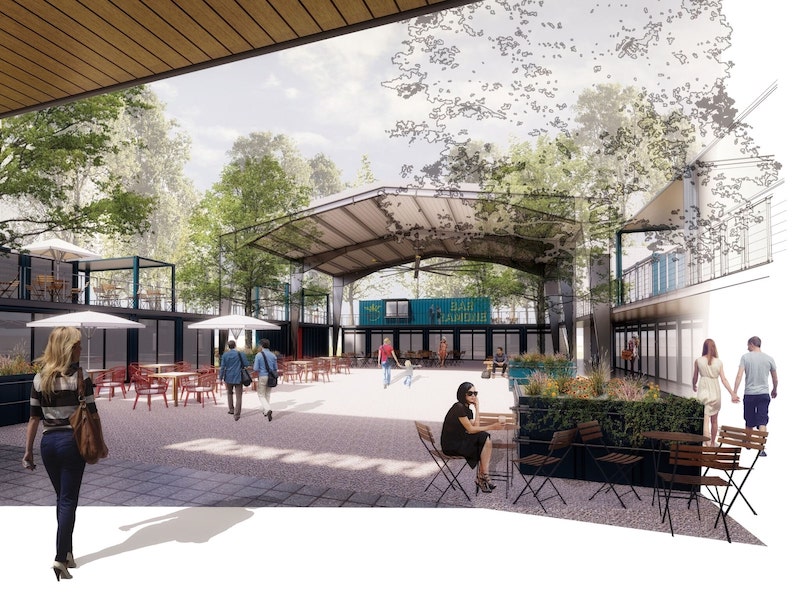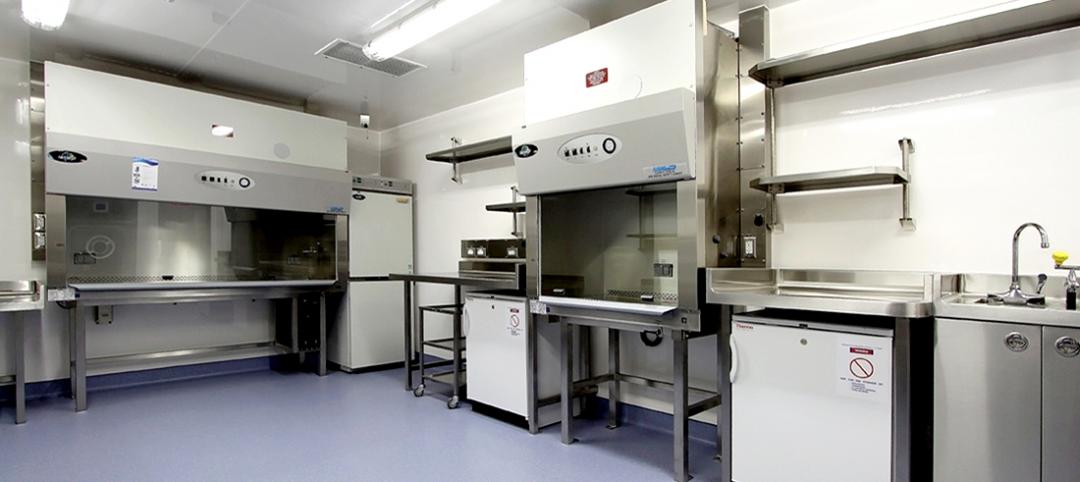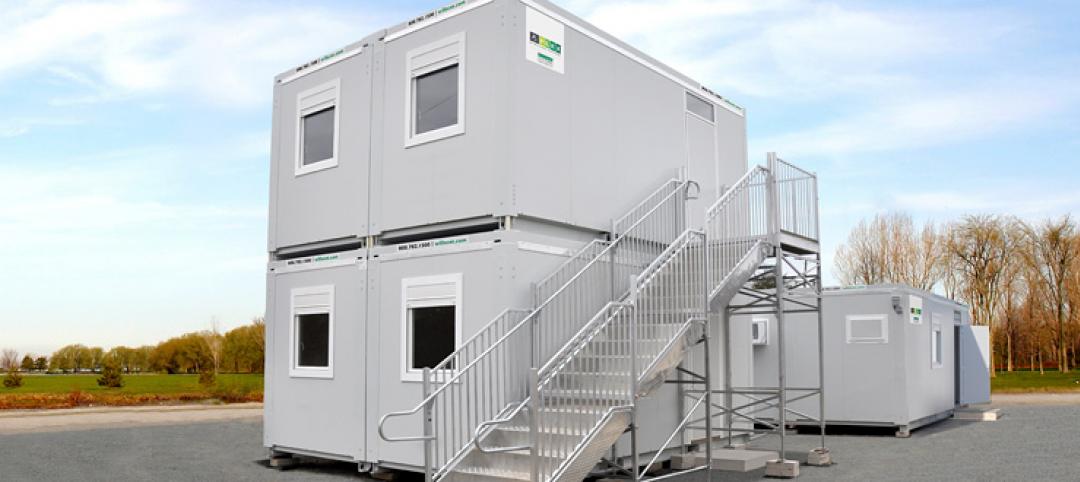The 7,000-acre Research Triangle Park (RTP) in North Carolina, founded in 1959, is the largest research park in the U.S. Nestled near Durham, Raleigh, and Chapel Hill, the park is home to more than 300 companies, 50,000 employees and 10,000 contractors focused on research, biotech, life sciences, and computing.
In March 2019, the Research Triangle Foundation, which owns and manages the park, announced its plans to construct Boxyard RTP, a 15,000-sf development within the park’s Frontier RTP campus made from repurposed shipping containers. Boxyard RTP, which is in the planning stages and is scheduled to open later this year, would be the park’s first food and retail complex. It will have space for up to nine food and beverage vendors, as well as several retailers and service providers.
The food and beverage container spaces will come with partial kitchen equipment upfits. The complex will include covered spaces for seating, special events, and performances.
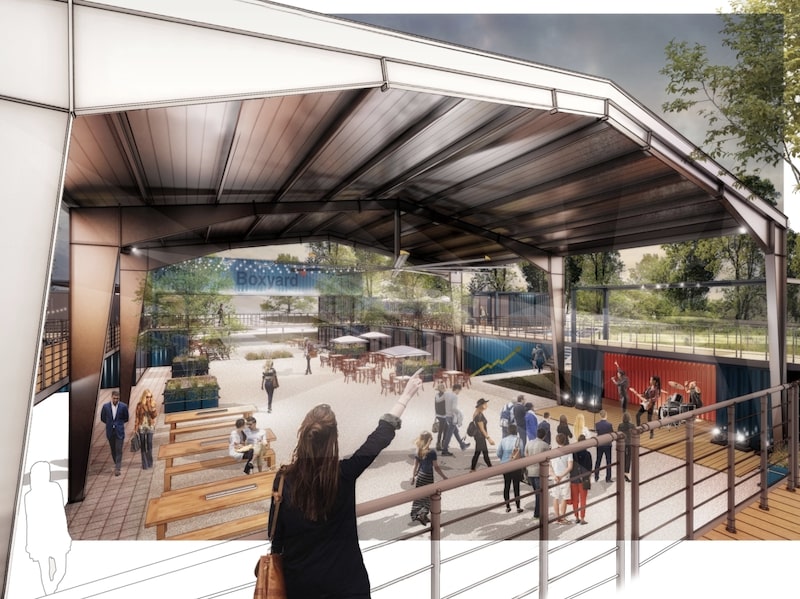 Performance space will face the courtyard at Boxyard RTP. Rendering: CallisonRTKL
Performance space will face the courtyard at Boxyard RTP. Rendering: CallisonRTKL
“Boxyard RTP is a workhorse opportunity for RTP and the region,” says Scott Levitan, president and CEO of the Research Triangle Foundation, in a prepared statement. “Experimental food, libations and retail, cool programming and event opportunities will flip the energy switch for RTP and our neighborhood communities.”
The Boxyard concept takes its name and inspiration from an existing development of 39 repurposed containers in the East Village district of Tulsa, Okla., developed by Nelson + Stowe Development and opened in December 2016. (The contractor on the Tulsa project was Ross Group, and the fabricator was Cisco Containers.)
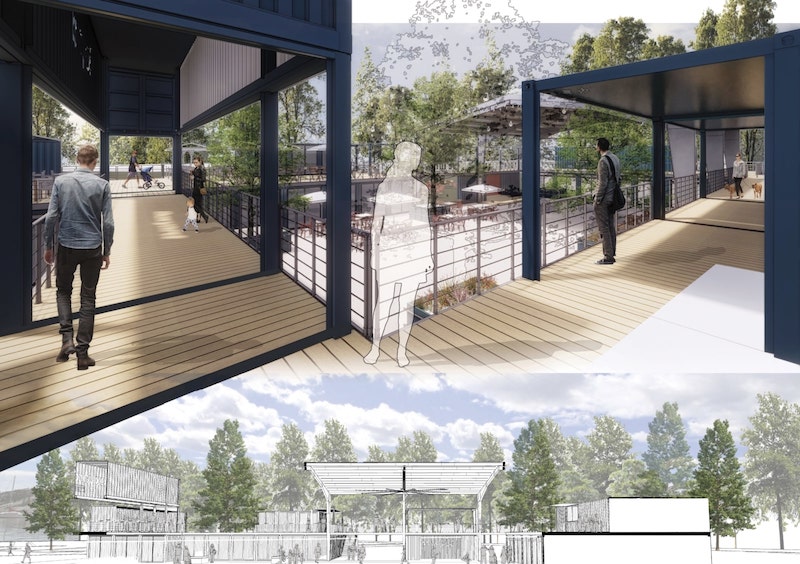 The concept aspires to retain as much of the lot's landscaping and trees as possible. Rendering: CallisonRTKL
The concept aspires to retain as much of the lot's landscaping and trees as possible. Rendering: CallisonRTKL
SHIPPING CONTAINER CONCEPT DESIGN PRESERVES NATURE
At Research Triangle Park, Boxyard RTP’s 38 shipping containers will be situated on a 12-acre wooded lot once dominated by railroad interchanges. CallisonRTKL, which designed the North Carolina concept, is incorporates existing landscaping and trees. The prefabricated shipping containers are modular and can be stacked, so minimal site disturbance will occur during construction.
The modular design is also flexible enough to accommodate the needs of different vendors.
The $7 million Boxyard RTP is organized around a central courtyard, with retail, food, and beverage stalls throughout the public space. The performance stage will face the courtyard, and upper level patios will provide seating and walkways. (Maverick Partners Realty Services is the leasing agent for this project.) As of this morning, Boxyard RTP’s website listed 10 vendors that have committed to leasing space, ranging from a brewery and a virtual-reality game room to a boutique flower shop.
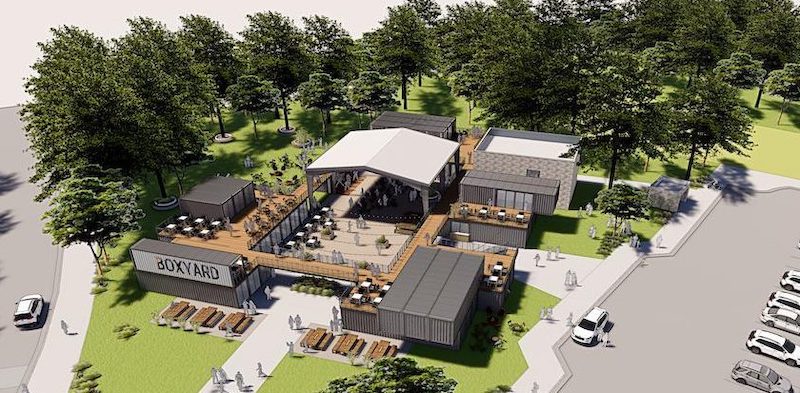 The $7 million Boxyard RTP complex will sit on 12 acres within the park's Frontier campus. Image: WRAL
The $7 million Boxyard RTP complex will sit on 12 acres within the park's Frontier campus. Image: WRAL
Related Stories
| Oct 9, 2014
Regulations, demand will accelerate revenue from zero energy buildings, according to study
A new study by Navigant Research projects that public- and private-sector efforts to lower the carbon footprint of new and renovated commercial and residential structures will boost the annual revenue generated by commercial and residential zero energy buildings over the next 20 years by 122.5%, to $1.4 trillion.
Sponsored | | Oct 7, 2014
Containing healthcare crises with modular units
With the recent news of the first Ebola case diagnosed in the U.S., there’s a lot of chatter about the possibility of a widespread outbreak in America. SPONSORED CONTENT
Sponsored | | Oct 1, 2014
Make space for Williams Scotsman
Can you guess what enables groundbreaking medical procedures, instruction of our future leaders, and meeting space for energy exploration professionals? The answer is modular space solutions. SPONSORED CONTENT
Sponsored | | Sep 30, 2014
How project managers can manage technology
Not long ago, the role of a construction project manager revolved around working with people: employees, vendors, consultants, designers, subcontractors and owners. Today, project managers primarily manage information. SPONSORED CONTENT
| Sep 24, 2014
5 business lessons from a 43-year Star veteran
Mary Ed Cain was supposed to be born a boy. That was the first time she surprised everyone. The second time came on a daily basis during her 43-year career at Star Building Systems. SPONSORED CONTENT
| Sep 24, 2014
Architecture billings see continued strength, led by institutional sector
On the heels of recording its strongest pace of growth since 2007, there continues to be an increasing level of demand for design services signaled in the latest Architecture Billings Index.
| Sep 22, 2014
4 keys to effective post-occupancy evaluations
Perkins+Will's Janice Barnes covers the four steps that designers should take to create POEs that provide design direction and measure design effectiveness.
| Sep 22, 2014
Sound selections: 12 great choices for ceilings and acoustical walls
From metal mesh panels to concealed-suspension ceilings, here's our roundup of the latest acoustical ceiling and wall products.
| Sep 9, 2014
Using Facebook to transform workplace design
As part of our ongoing studies of how building design influences human behavior in today’s social media-driven world, HOK’s workplace strategists had an idea: Leverage the power of social media to collect data about how people feel about their workplaces and the type of spaces they need to succeed.
| Sep 7, 2014
Behind the scenes of integrated project delivery — successful tools and applications
The underlying variables and tools used to manage collaboration between teams is ultimately the driving for success with IPD, writes CBRE Healthcare's Megan Donham.


